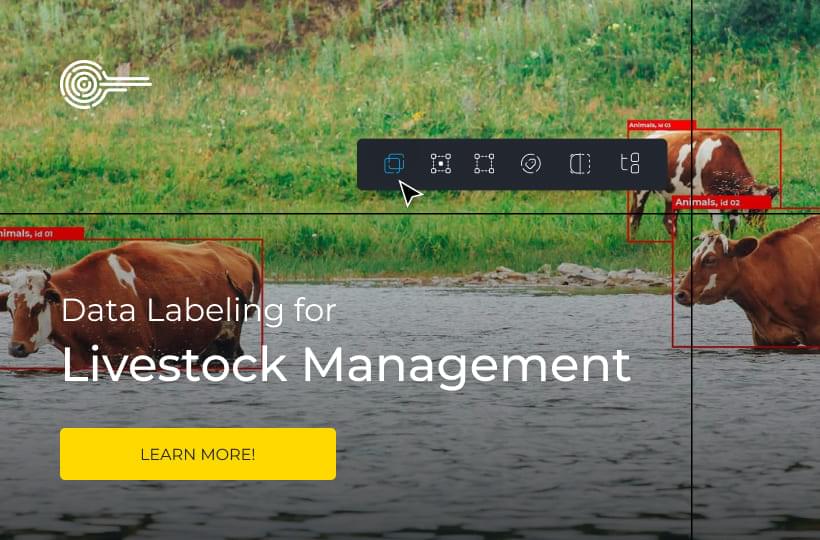Choosing the Right Learning Framework to Reduce Labeling Effort
Active learning can reduce the manual labeling time, which affects machine learning. It requires less labeling effort because it focuses on informative data points. It optimizes data annotation and increases model accuracy.
Frameworks identify data points for training. This method is proper when obtaining labeled datasets. By focusing on the data, we can significantly reduce the time and cost of manual labeling.
Key Takeaways
- Active learning can reduce manual labeling time by up to 50%.
- It optimizes data annotation by selectively querying the data points.
- Significantly lowers the cost and time associated with manual labeling.
- Enhances machine learning model accuracy by focusing on data points.
- Active learning frameworks balance labeling effort and model performance.

Understanding Active Learning Frameworks
Active learning frameworks make machine learning models efficient. They enable algorithms to ask for specific data labels, optimizing the learning process. We will show the full benefits of active learning and its place in AI.
Definition and Purpose
Active learning means that annotators are involved in their education. Bonwell and Eison (1991) state that active learning involves "anything that involves students in doing things and thinking about the things they are doing." Active learning in AI allows models to select the most helpful training data, increasing their accuracy. It reduces labeling costs, speeds up training, and improves results through continuous improvement through user interaction.
Components of Active Learning
- Selection Strategy. Identifies the valuable points for data labeling.
- Iterative Process. Continuously enhances the model by adding new labeled data.
- Integration. Seamlessly merges with current machine learning.
These learning components create a dynamic education for AI.
Cost-Benefit Analysis of Data Labeling Efforts
A thorough labeling cost-benefit analysis shows benefits. Active learning reduces labeling effort and ensures resource allocation. It's leading to cost savings and improved return on investment (ROI). Selectively labeling data enhances model performance with minimal annotation.
Overview of Popular Active Learning Frameworks
Several active learning frameworks offer diverse methodologies to optimize the data labeling process. These frameworks increase model performance by strategically selecting data points.
Here, we will show three popular active learning frameworks.
Dataset Characteristics
Diversity and volume analysis are essential to obtaining quality results. Large, diverse datasets require a structure with robust sampling methods.
- Diversity. Provides a wide range of case scenarios for training.
- Volume. Handles large volumes of data without overloading computing resources.
- Dimensionality. Handles large data sizes.
Budget Constraints
Budgeting includes both initial setup and ongoing operational expenses. Different frameworks require different computational resources and expert involvement.
Scalability and Flexibility
A framework's scalability and flexibility are critical for dynamic project demands. As projects evolve, the chosen framework must increase data volumes and complexity.
- Flexibility. Adapting to changing requirements and integrating with different systems.
- Scalability. Handling growing datasets and maintaining performance.
Metrics for Assessment
The following metrics should be considered for a frame's performance. Focusing on accuracy rate, data latency, and computational resource consumption is vital. This drives technological and business progress.
Metrics for Framework:Accuracy Gain.
Measures accuracy when more labeled data is added.
- Data Label Usage Efficiency. Measures how well the framework uses a limited number of data labeled samples.
- Computational Resource Consumption. Shows the computational resources required to process and label the data.

Studies and Applications
Research shows the benefits of these frameworks in various fields. In healthcare, frameworks improve data labeling, increasing the accuracy of diagnostic models. In autonomous driving, object detection systems across multiple road scenarios are improved. How data labeling is essential for autonomous vehicle development, check out this article on Keymakr.
The use of active learning frameworks and successful research reinforce their broad utility. They stimulate scientific research, catalyzing progress in fields.
Here, you can compare the performance of each framework:
Active learning frameworks are solutions to labeling problems. They are needed in industries with complex image annotations.
Tailoring for Specific Tasks
Active learning framework solutions are used to achieve accuracy in specific tasks. For example, manual annotation of large image sets is time-consuming in automotive interior sensor systems. Enrolling active learning algorithms is targeted to the annotation needs, which speeds up the annotation process. Keymakr provides advanced annotation solutions, integrating active learning to optimize data labeling.
User Feedback Mechanisms
These mechanisms actively collect and integrate user feedback, and the system continuously refines the data selection criteria. This feedback is essential for high performance, such as accuracy and recall. As a result, active learning models evolve according to user needs. Frameworks like modAL offer various strategies from classification to identification.
Initial Setup
Active learning frameworks require planning and attention to detail. Programs should include a variety of techniques for different learning styles. The configuration must align with the business goals and datasets used. Metrics like the Wittwer & Renkl model help guide the setup process, ensuring learning.
Training and Onboarding
Training is necessary to enable team members to operate and use the system. Programs should allow annotators to ask questions, practice knowledge, and solve problems. Elements such as quizzes, and surveys enhance learning outcomes. Learning objectives are needed so that annotators can apply their knowledge.
Evaluation and Improvement
AI advancement requires evaluation and refinement to adapt to a changing environment. Evaluation for learning purposes is essential for progress. User feedback and real-world examples help refine the framework to meet needs.
Following these practices will provide customization and hands-on learning, helping create an environment for continuous improvement. Companies can optimize the performance of active learning systems and achieve long-term growth.
Problems and Solutions
Active learning workflows have changed the approach to complex data and automated labeling tasks. Avoid the problems described below.
Rethinking Automation
Automation annotation has many benefits, but manual annotation is also essential. Manual annotation is needed to label complex data. It is vital to balance automation and human control, to combine automated solutions and harness human capabilities.
Underestimating Data Complexity
All data is different, so a one-size-fits-all approach will not be successful. Simplifying data can lead to low performance. By underestimating the complexity of data, many developers have difficulty setting clear end goals for learning activities.
Careful data analysis is essential for an active learning system. Use metrics and study practical examples to ensure that the structure matches the complexity of the data.
Ignoring User Experience
A positive user experience impacts the quality of the result. Reviewing feedback and training can improve this transition. Many developers don’t track progress during training, which hinders the adoption of new systems and frameworks.
User feedback makes the team productive. Adjustments and evaluations are necessary to improve user experience and ensure success. Understanding this issue will improve efficiency and user engagement. Learn more about when to use automatic vs. manual annotation.
Emerging Technologies and Impact
Augmented reality and AI make learning more interactive by showing real-time data and connecting with existing systems. The pandemic has accelerated the development of distance learning, and artificial intelligence is helping to improve it by creating personalized approaches.
FAQ
What are active learning frameworks?
Active learning frameworks help machine learning models become more accurate by selecting underlying data for labeling and training.
What are the components of active learning frameworks?
Сomponents include the selection strategy for data points, the iterative learning process, and integration with existing machine learning models. These elements work together to improve the model's performance with minimal labeled data dynamically.
What benefits of active learning frameworks for data annotation?
Active learning frameworks significantly reduce the time and cost of labeling large datasets. They also improve the efficiency of machine learning models, which is critical for maintaining high data and model performance.
What challenges are in manual data labeling?
Manual data labeling is time-consuming and potentially inconsistent. It poses challenges in maintaining high data quality, which can impede the performance of machine learning models, making manual labeling efforts costly.
How does an active learning framework impact data quality?
Active learning frameworks select the most critical data for labeling, increasing models' accuracy and saving resources.
What is Uncertainty Sampling in active learning?
Uncertainty sampling is a technique in which the model selects data points for labeling with confidence in its predictions. This method is ideal for smaller, more straightforward datasets. It helps improve model accuracy cost-effectively.
What is Query-by-Committee?
Query-by-Committee involves multiple models predicting data labels and selecting data points where these models disagree the most. This approach enhances the model's robustness by focusing on areas needing improvement.
What are Reinforcement Learning-Based Approaches in active learning?
Reinforcement Learning-Based Approaches optimize the selection process of data points by learning from past actions and improving over time. These methods are suitable for complex dynamic environments. They offer a more adaptive active learning framework.
How are the active learning frameworks evaluated?
These metrics are based on three criteria: accuracy gain, data label usage efficiency, and computational resource consumption. They stimulate scientific research, catalyzing progress in fields.
Can active learning frameworks be customized for specific tasks?
Active learning frameworks can be tailored to specific tasks and industry needs. Customization ensures the algorithms best suit the task's challenges and data characteristic
What are common pitfalls in active learning, and how can they be avoided?
These include overestimating automation capabilities, underestimating data complexity, and ignoring user experience. To maximize efficiency, avoid these. Use metrics and study practical examples to create a structure matching the data's complexity. Understanding this issue will improve efficiency and user experience.
What is the future of active learning structures?
Active learning is expected to be integrated with artificial intelligence technologies, leading to autonomous systems. Quantum computing and augmented reality will make active learning systems more flexible and user-friendly.
